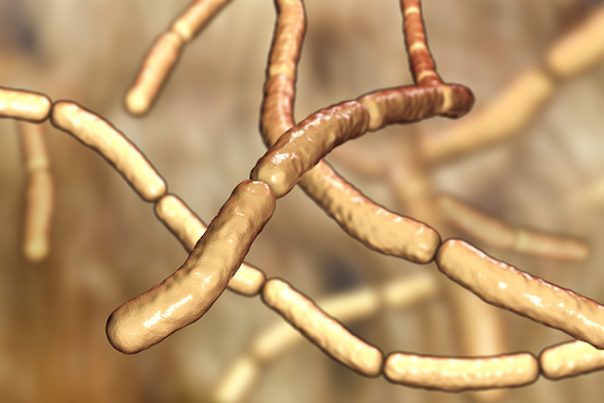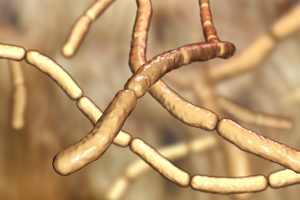
Coccidioidomycosis – causes, side effects and treatments at NaturalPedia.com
Thursday, February 22, 2018 by Janine Acero
http://www.naturalpedia.com/coccidioidomycosis-causes-side-effects-and-treatments-at-naturalpedia-com.html

Coccidioidomycosis is an infection caused by the fungus Coccidioides, which is endemic to the southwestern U.S. and parts of Mexico and Central and South America. These areas are characterized by semiarid climates with hot summers and alkaline soil. It was first described in Argentina in the late 1800s and has been studied in the early 1900s.
Commonly known as valley fever, people can get infected by inhaling the airborne infective spores (arthroconidia), although not every person who has breathed in the spores is guaranteed to get sick. Patients typically get better on their own within weeks to months, but in some cases, an antifungal medication is needed.

Known symptoms and risk factors of coccidioidomycosis
Coccidioides infection starts in the lungs. It commonly affects people over 60 years of age. Most people with valley fever never have symptoms, while in other cases, the symptoms are similar to other respiratory illnesses. The symptoms will typically subside after several weeks (although fatigue may persist for months), and 95 percent or more of patients recover without any further complications.
Common symptoms include:
- Swelling of the ankle, feet, and leg
- Sore throat
- Chest pain
- Shortness of breath
- Wheezing
- Cough with blood-tinged phlegm (sputum)
- Fever and night sweats
- Headaches
- Joint stiffness and pain
- Muscle aches
- Appetite loss
- Painful, red lumps on lower legs (erythema nodosum)
People infected with a disseminated (widespread) form may have the following symptoms:
- Change in mental status
- Enlarged or draining lymph nodes
- Joint swelling
- More severe lung symptoms
- Neck stiffness
- Sensitivity to light
- Weight loss
Skin sores or lesions are another typical sign of disseminated coccidioidomycosis, which is most often seen on the face.
Patients with pre-existing conditions are at an increased risk of more severe disease. These are people who:
-
have complications from human immunodeficiency virus (HIV)
-
are pregnant; the risk is slightly higher with each progressive trimester
-
have lymphoma
-
have had solid organ transplantation
-
have been under long-term corticosteroid treatment
These cases may require months to years of antifungal therapy, and high-risk patients are at significant risk for relapse when treatment is stopped.
Of the clinical syndromes, mortality is highest in coccidioidal meningitis. If left untreated, meningitis is fatal in 90 percent of patients within one year and is universally fatal within two years. Mortality rates can be 20 to 40 percent, even with treatment.
Body systems harmed by coccidioidomycosis
The infection can spread from the lungs through the bloodstream to involve the skin, eyes, bones, lymph nodes, liver, kidney, prostate, peritoneal cavity, and other organs. Virtually any organ of the body can be involved, which is called disseminated (widespread) coccidioidomycosis, but Coccidioides species has a predilection for the lungs, skin, soft tissue, joints, and central nervous system, especially the meninges. This is why meningitis is a grave complication.
Food items or nutrients that may prevent coccidioidomycosis
Coccidioidomycosis treatment focuses on eradicating the Coccidioides fungus in the body. Natural treatments such as herbs and oils are especially useful for removing fungus and any other toxins from the body.
Detoxing the body is the most important factor for treating valley fever. Herbs such as mullein leaf tea and turmeric and anti-fungal oils like extra virgin coconut oil and oregano essential oil are some excellent detoxification agents. Other ways of preventing coccidioidomycosis include:
- Consuming plenty of fluids
- Supplementing your diet with protein from soy milk, dairy milk, yogurt and barley water
- Adding one tablespoon of turmeric powder to a glass of boiling water and have this three times daily. Curcumin found in turmeric has anti-fungal properties
- Eating plenty of vitamin C rich foods like limes, lemons, oranges, mangoes, papayas, etc.
- Taking a capsule of the herb Echinacea twice daily for 15 days for accelerated healing and treatment for infections
- Boiling five to 10 leaves of holy basil in a cup of water with a spoon of honey can help bring down the fever and eliminate fungal infections
Treatment, management plans for coccidioidomycosis
Specific antifungals (and their usual dosages) for treatment of coccidioidomycosis include:
- Amphotericin B (0.5 to 1.5 mg/kg/day IV)
- Ketoconazole (400 mg/day orally)
- Fluconazole (400 to 800 mg/day orally or IV)
- Itraconazole (200 mg two to three times/day orally)
Of these treatments, ketoconazole is the only one that is approved by the U.S. Food and Drug Administration (FDA) for treatment of coccidioidomycosis, though amphotericin remains as the treatment of choice for severe infection. Meanwhile, fluconazole performs better in pulmonary and soft tissue infection, while itraconazole seems to perform better in skeletal lesions.
Note that none of the azoles is safe to use in pregnancy and lactation because they have shown teratogenicity in animal studies.
Where to learn more
- Tips for Dealing with Yeast, Candida or Fungal Infections
- Lavender essential oil is effective in combating fungal infections
- Natural compounds in carnivorous plants could fight human fungal infections
- Cure fungal infections naturally
- Touch is the most basic sense: Even bacteria use it to navigate their environment and communicate
Summary
Coccidioidomycosis, commonly known as valley fever, is a fungal infection caused by inhaling the airborne spores of the Coccidioides species, which are endemic to the southwestern U.S. and parts of Mexico and Central and South America.
Valley fever is mostly asymptomatic, but some cases will exhibit flu-like symptoms. Patients with pre-existing health conditions such as HIV are at increased risk of severe complications.
Detoxing the body is a major treatment and preventive measure against valley fever.
Sources include:
Tagged Under: Tags: Coccidioidomycosis





